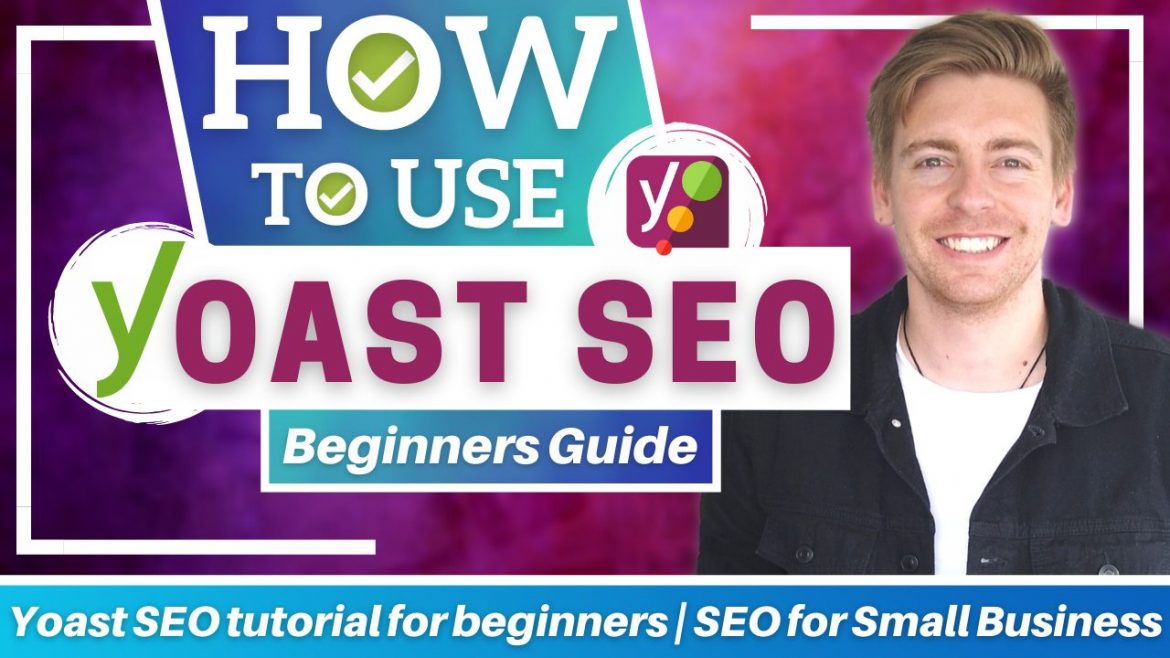Table of Contents
Yoast SEO is a powerful, free SEO plugin for WordPress that allows you to optimize your website for search engines like Google, Bing, and Yahoo without needing any technical SEO experience.
This is an ideal tool for those who don’t know where or how to get started with SEO in 2023.
In this post, we’re going to dive into this Yoast SEO tutorial for beginners and help you set up and get started with Yoast SEO on your WordPress website.
Before we get started with this Yoast SEO tutorial for 2023, it’s important to know that this tutorial is aimed at small businesses and blogs.
How to use Yoast SEO?
Let’s walk you through the Yoast SEO WordPress plugin to start ranking higher on search engines and ultimately drive more organic traffic to your website:
Step 1: Getting Started with Yoast SEO

First things first, we need to install one of the best SEO plugins for WordPress i.e., Yoast SEO.
For that, you have to log in to your WordPress dashboard. Now navigate over to ‘Plugins’ and come down to click ‘Add New’.
Type in ‘Yoast SEO’ on the search bar. Locate the plugin which has over 5 million active installations.
Click ‘Install Now’ and ‘Activate’.
Your Yoast SEO WordPress plugin has now been installed and activated.
Read more: Google My Business SEO
Step 2: Configuring Yoast SEO Setup
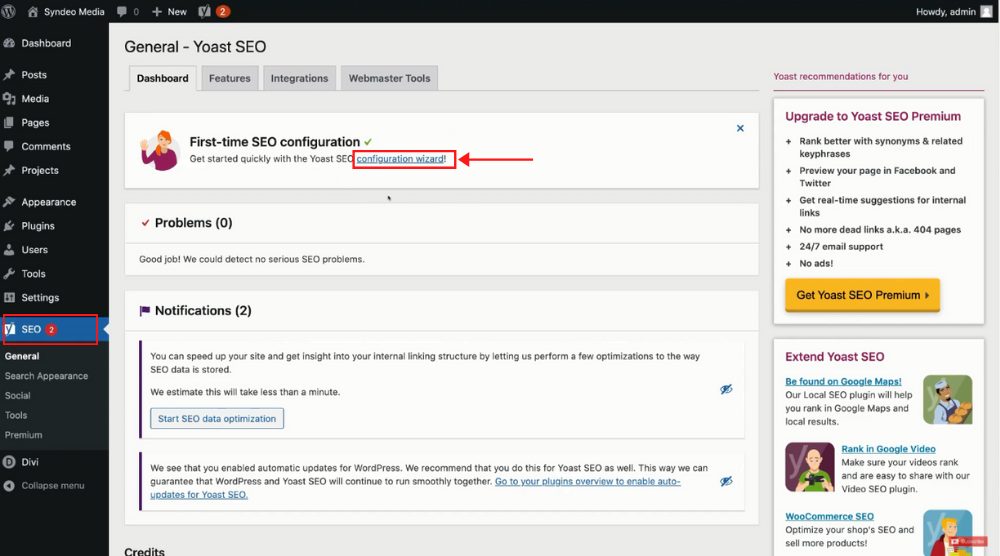
To start using Yoast SEO for organic traffic growth, we need to configure the setup first. Navigate to your left to ‘SEO’ and click on it.
To configure the Yoast SEO plugin with your WordPress website, you need to activate the configuration wizard.
To do this, simply click on ‘configuration wizard’. In the next step, we will select Option A since our website is live.
Click ‘Next’. With this, our WordPress website will be indexed on search engines which will allow people to find our website online.
These settings are not permanent and can be changed later on. Under ‘Site Type’, we’re going to select ‘A corporation’. Click ‘Next’.
Under ‘Organization or person’, we’re going to keep ‘Organization’ selected.
Now, add the name of your small business or blog. The name we’ll add here is ‘Syndeo Media’.
In the subsequent steps, provide your business logo and add your social media channels. For instance, if you have a Facebook business page, go ahead and paste the URL in the given field.
You can also add these later. For the purpose of this Yoast SEO tutorial, we’re going to leave these blank.
Following this, under ‘Search engine visibility’, all the options that you see should be turned on to ‘Yes’.
Basically, you want your post, pages, and projects to display and be indexed in search engines.
It helps people and Google find your content online.
Click Next. Under ‘Multiple authors’, bloggers can select ‘Yes’ if they do have multiple authors that create content.
If you’re a small business owner, you can go ahead and choose ‘No’. Again, you can change these settings later on. Hit ‘Next’.
For your pages and posts and the way that they display on search engines like Google, you can choose a title separator.
On Google search, you can see different title separators. We’re going to select ‘|’ as our title separator. Click Next again.
If you don’t want to share your website information with the Yoast SEO WordPress plugin, select ‘No’.
Hit Next. Since you’re most likely a beginner, it will be a good idea to sign up for their newsletter to get the latest SEO tips and the news.
Click Next and Close. You have now completed the initial configuration of the Yoast SEO plugin for your small business.
Read more: SEO for Beginners
Step 3: Configuring General Settings

Heading back to your WordPress dashboard, you need to complete the ‘General settings of the Yoast SEO WordPress plugin.
For that, click on ‘Features’ under the SEO settings. By default, most of these options are enabled.
The only option you want to turn off is ‘Enabled Slack sharing’ if your organization is not using Slack.
Remember to save changes. Now, head over to ‘Integrations’. Turn both the integrations off because we don’t use either Semrush or Ryte.
If you do, you can leave these on. But for this Yoast SEO tutorial for WordPress, we’re going to disable them and save changes.
Step 4: Connecting Google Search Console
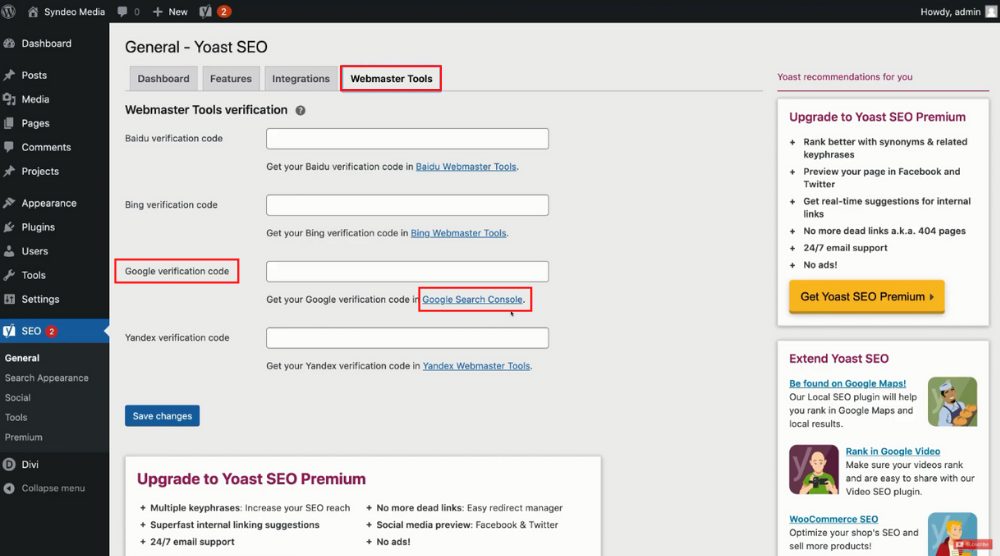
Now, navigate up to ‘Webmaster Tools’.
For this Yoast SEO tutorial for beginners, we’re going to focus on Google verification amongst the four search engines.
This allows you to connect your website with Google Search Console. Therefore, you can measure, monitor, or observe your website’s performance on Google search.
Click ‘Google Search Console’.
Follow these steps for verification:
- Select ‘HTML tag’ and copy the code.
- Head back to Yoast SEO settings.
- Paste the code in the ‘Google verification code’ field.
- Click ‘Save changes’.
- On your Google Search Console, click ‘Verify’.
Your Google verification is now complete.
Read more: Google Search Console Tutorial for Beginners
Step 5: Checking Search Appearance

Head back to your dashboard and click ‘Search Appearance’ under SEO. Before we start optimizing our website, we need to check more appearance options.
Since we have already completed the General settings, you can proceed to click ‘Content Types’.
Content Types
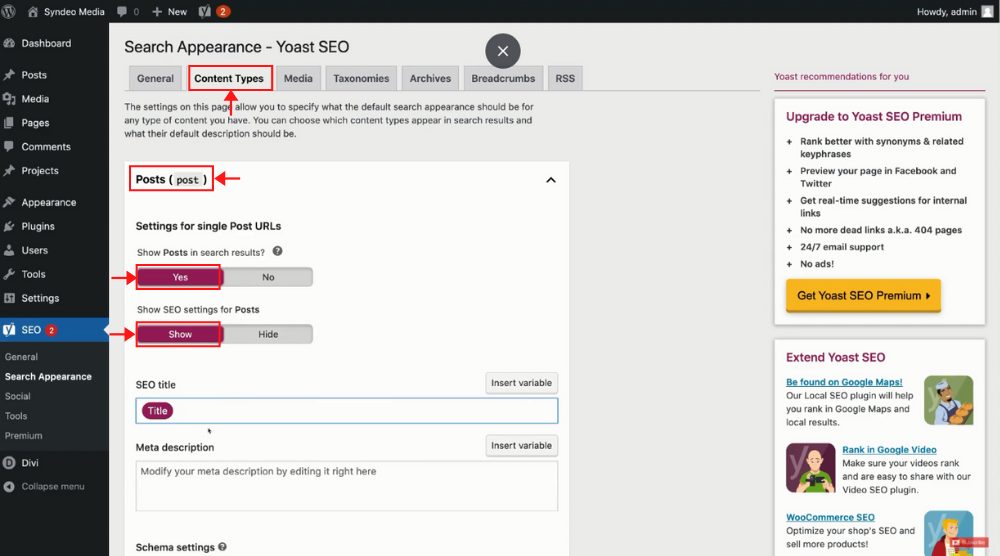
Here you will find three categories – Posts, Pages, and Projects.
We’re going to leave the default settings on, under ‘Posts’. Under ‘SEO title’, we will delete everything but ‘Title’. This will allow your title to only display on search engines.
When someone types a related keyword on Google search and your post appears, then your SEO title is going to be the title of your post.
You can customize your SEO title if you like. We will cover Meta Description Later in this Yoast SEO tutorial. You can leave that blank for now.
Follow the same process for Pages and Projects. Click ‘Save changes’.
Media

In this step, make sure that the ‘Media & attachment URLs’ option is turned on. This further enhances the navigation of your content when you have attachments like PDFs for people to download.
Taxonomies
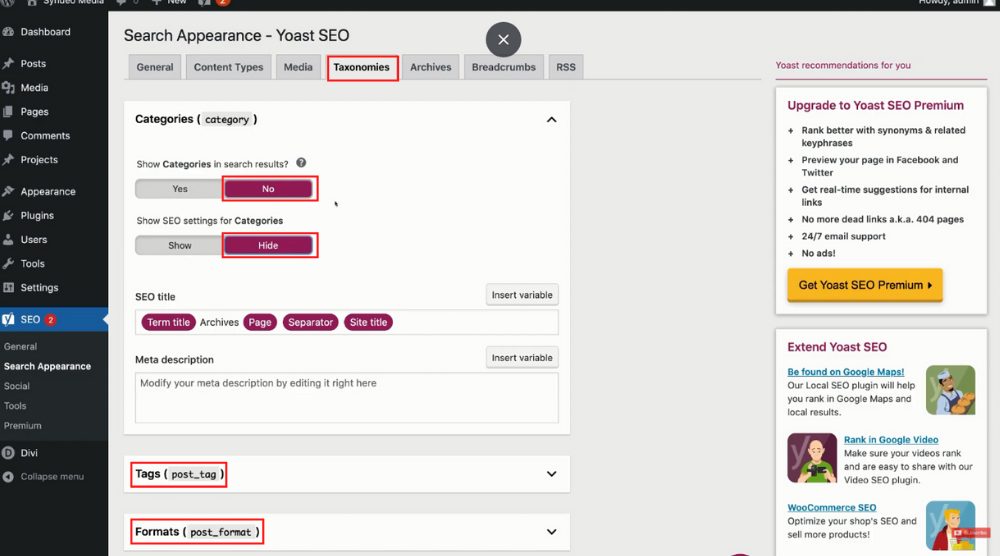
Apart from that, you don’t want to show your SEO settings as well. The point is to not put too much irrelevant information in search engines.
And you certainly don’t want to duplicate content, as Google frowns upon this and can penalise, or rank your pages lower for this.
Leave other options as they are. Come down to tags, and hide these options as well.
In the next step, disable the Format-based archives. Follow the same process for Project Categories and Project Tags. Save changes.
Leave the settings as they are for ‘Archives’, ‘Breadcrumbs’, and ‘RSS’. Hit ‘Save changes’.
Step 6: Evaluating Social Media Settings
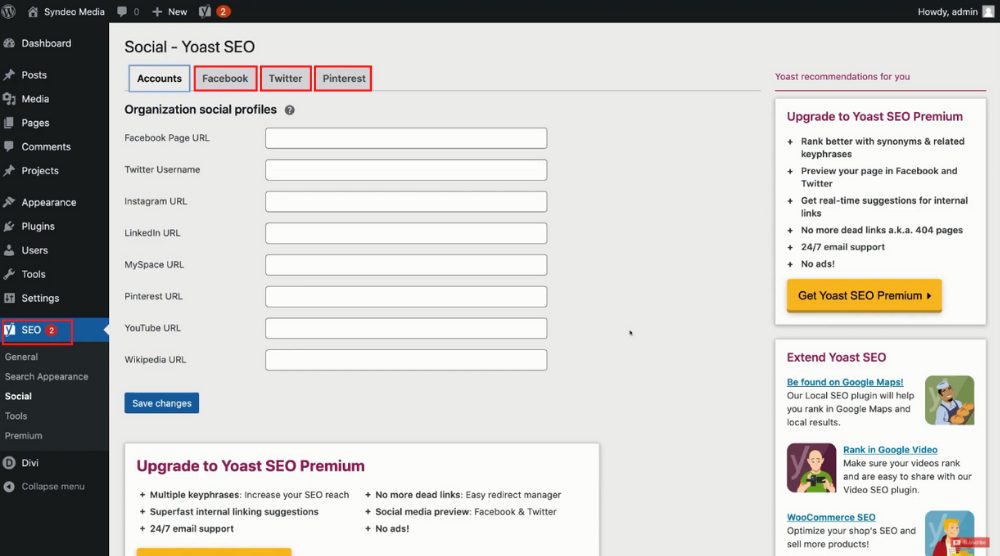
Under ‘SEO’ on your WordPress dashboard, click on ‘Social’. Here, you can add your social media channels if you didn’t in step 2. You also have further integrations for Pinterest, Twitter and Facebook.
For this Yoast SEO tutorial for beginners, we’re going to leave these blank.
Step 7: Optimizing Post/Pages with Yoast SEO

This is where the magic begins.
Click on ‘Pages’ on your WordPress dashboard and select ‘All Pages’. For the purpose of this tutorial will select ‘Home page’.
It’s important to note that your posts/pages backend may look completely different since we’re using the Divi theme (However, the Yoast SEO settings will be the same).
Now, under ‘Publish’ (on your right), you will see two green-color elements – readability and SEO. You may see the color red or no color at all. Since we’ve already optimized this content, these options appear green in color on our post.
Step 8: Optimizing SEO & Readability
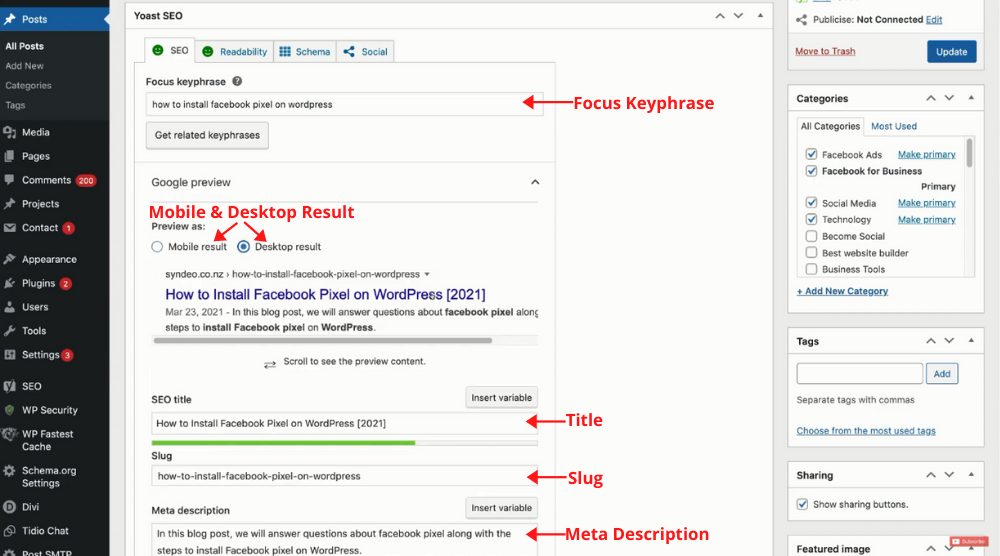
If you scroll down the page until you find ‘Yoast SEO’, you can add your focus keyword or keyphrase here.
Undoubtedly, keyword research is a big part of SEO. You can learn more about keyword research here.
Apart from that, you can also preview your website title and meta description (for both mobile and desktop results) here. Down below, you can see the SEO title which should have your targeted keyword or keyphrase.
Slug is basically how your URL will appear on search engines. It should also include your keyword or keyphrase. For each post, you’ll create meta descriptions that are optimized for your targeted keyword.
Now, if you click on ‘SEO analysis’, you can see the results for SEO including the problems that you need to fix. You don’t have to ensure that they’re all green. Instead, try to make the majority of them green to get that green smiley face near ‘SEO analysis’.
Apart from SEO, you want to ensure good readability.
Yoast SEO provides suggestions that you can incorporate to improve readability. It’s pretty straightforward. You can also get further information about the Yoast SEO WordPress plugin, from their blog.
Yoast SEO tutorial for beginners (Video Guide)
Also, if you don’t understand any of these steps and recommendations or are facing any difficulty while using the Yoast SEO plugin, we have an easy to follow video tutorial just for you.
With this, we wrap up our Yoast SEO tutorial for beginners. Take the time to optimize your content with this plugin and you’ll start generating more organic traffic on your WordPress website in no time!
